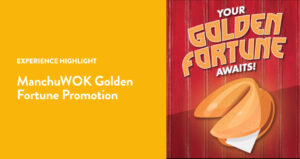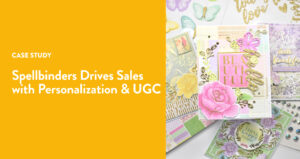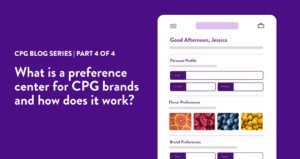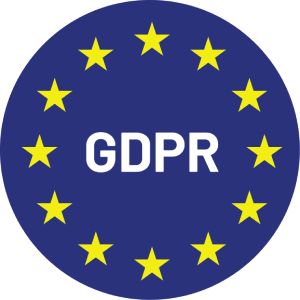Contemporary shopper marketing is experiencing rapid changes due to technological developments that have resulted in fierce competition. Customer loyalty has almost disappeared, and businesses in the Consumer Packaged Goods (CPG) sector struggle to keep customers—the key to building a strong business.
With an increasingly discerning consumer base demanding personalized, immersive shopping experiences, the key to differentiation is in gathering and leveraging the right data. Omnichannel strategies require personalized experiences, but how do we gather reliable enough data to really know what our consumers want when third-party data gathering leaves shopper marketers guessing? There’s often too much information, meaning it’s hard to wade through and the data is not explicit.
Zero-party data (ZPD), a compelling innovation in data gathering, is paving the way for companies to collect the quality consumer data they need to create superior, personalized omnichannel shopping experiences that build customer loyalty and stimulate revenue growth. This article will discuss zero-party data for the shopper marketer, why it’s important, what it is, and methods for zero-party data gathering.
The importance of accurate customer data
To fully understand their clients’ needs, CPG brands need access to accurate and current data. Reliable customer data fuels an understanding of consumers and enables CPG brands to create value in several ways across all channels that we discuss further below.
Personalization
Personalization is no longer a nice-to-have feature; it’s an expectation. Consumers increasingly seek personalized experiences that cater to their unique needs and preferences. Accurate customer data allows CPG brands to tailor their offerings and marketing messages to individual customers, enhancing the shopping experience with personalized coupons and offers regardless of where they’re shopping, significantly increasing customer satisfaction.
Building customer loyalty
Accurate customer data allows brands to understand what drives customer loyalty and to put strategies in place to strengthen these loyalty drivers based on customer behavior and preferences. This can lead to increased customer retention, which is often more cost-effective than acquiring new customers.
Competitive advantage
Finally, in the saturated CPG market, accurate customer data can provide a significant competitive advantage because the customer can receive a personalized, relevant shopping experience across all shopping channels. Once a customer’s preferences are known, the customer can be sent coupons valid at brick-and-mortar stores or online, encouraging the customer to purchase their needed items when it’s most convenient.
Zero-party data for reliable customer data
Successful shopper marketing centers on a simple premise: understand your customer. Zero-party data allows brands to do exactly that. Zero-party data has emerged as a potent and ethical means of data collection. It’s not just a means to an end but an end in itself. It’s the conversation brands have with their customers, and the trust and transparency it engenders are as important as the insights it reveals.
What is zero-party data?
Zero-party data is information a customer intentionally gives to a brand about themselves. In return, the brand offers value, often through a coupon code, recommendations, or loyalty points. Because of the frank nature of the exchange, zero-party data collection can help build trust between the customer and the brand. The brand gets updated on customers’ needs and can offer solutions across all sales channels.
It’s data a brand wouldn’t get anywhere else, regardless of how much money they pay or behavior they track. For example, in the past, shopper marketers relied on demographic, third-party data to understand customers. They’d analyze large amounts of data to determine twenty to thirty year olds who live in NYC, with an income over $80k a year, typically buy this, this, and this.
With ZPD, you can ask customers what they want and not make assumptions based on third-party data. You can learn that Jane Doe who lives in NYC likes organic products, spends $150/week on groceries, and prefers to buy household products online rather than in-store. ZPD helps you learn about customers’ interests, needs, values, likes/dislikes, and other preferences—the true motivations behind making purchases.
No better source than the consumer
Third-party data can’t offer shopper marketers the specific and current data that will help build personalized experiences across all channels. It can offer marketers demographic information, such as gender, income, location, and previous purchases, but third-party data won’t tell us what our customers prefer right now.
With zero-party data, you can ask your customer directly what they want and why. Instead of spending hours pouring over data tables and still wondering, your consumers will share with you what you really need to know.
Methods for collecting zero-party data
CPG brands need to consider how to collect zero-party data. These techniques require strategic thinking combined with a straightforward approach.
For CPG brands, it’s essential to prioritize transparency and ethics throughout the process to create trust and keep customers coming back for updates. Brands should clearly state how this data will be used, clarify the value exchange to the customer, and be careful to protect the data.
There are several popular methods CPG brands can use to collect zero-party data. Surveys and quizzes are particularly effective, inviting consumers to share their opinions and preferences in a fun and engaging digital experience. Innovative, campaign-specific experiences evolve from injecting a bit of fun into the experience design. Preference centers are another great opportunity for brands to keep key data points up-to-date.
Real-world examples
Many brands use a zero-party data platform to help them build experiences, earn customer preference data, and deliver personalized experiences. See the examples below.
Unilever holiday giveaway calendar
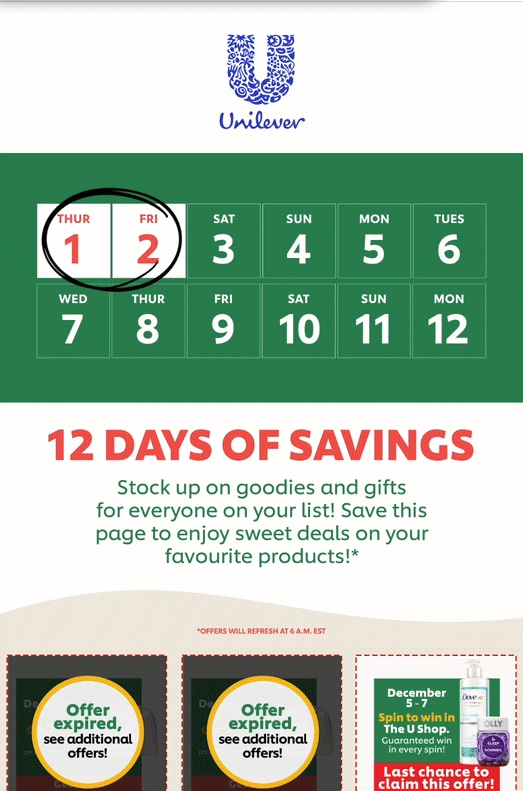
To celebrate the holidays, Unilever Canada created a 12-Day Giveaway Calendar. The calendar presented a range of offers designed to drive sales of Unilever products at retail locations in exchange for data about their customers.
The calendar also offers customers multiple chances to interact with the brand over the twelve days each with its own unique discount code. This technique allows Unilever to track purchases and gather data they normally wouldn’t be able to access because they normally don’t sell directly to consumers.
This interactive experience also tracks customer visits. If the visitor is new to Unilever marketing, they’re automatically redirected to an opt-in page building the marketing database. The experience only allows existing subscribers to take advantage of the offered discounts, building trust and value.
Arm & Hammer scent finder
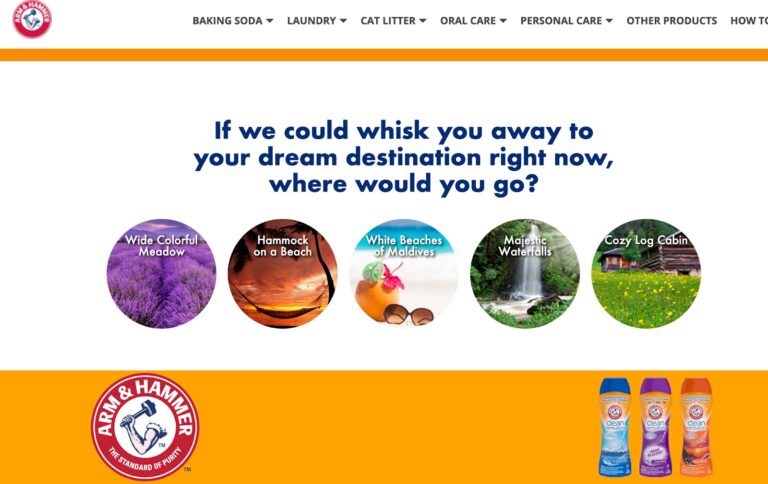
Arm & Hammer uses email, social media, and targeted ads to attract customers to this evergreen (always-on) product finder quiz that helps customers pick the best laundry scent based on their personality type. This fun quiz not only helps shopper marketers learn more about their customers’ preferences, but also allows shopper marketers to recommend relevant products and help their customers discover new product lines and scents. Customers are incentivized to participate because they receive personalized offers in return.
Unilever onboarding quiz
This onboarding quiz invites customers to share their preferences. In exchange, the customer receives personalized offers on products that are necessities. In these recessionary times, customers are always looking for a way to save.
This quiz ticks a lot of boxes. It’s attractively designed, offers real value, and puts the customer in the driver’s seat regarding offers they’ll receive.
Vitafusion pop-up
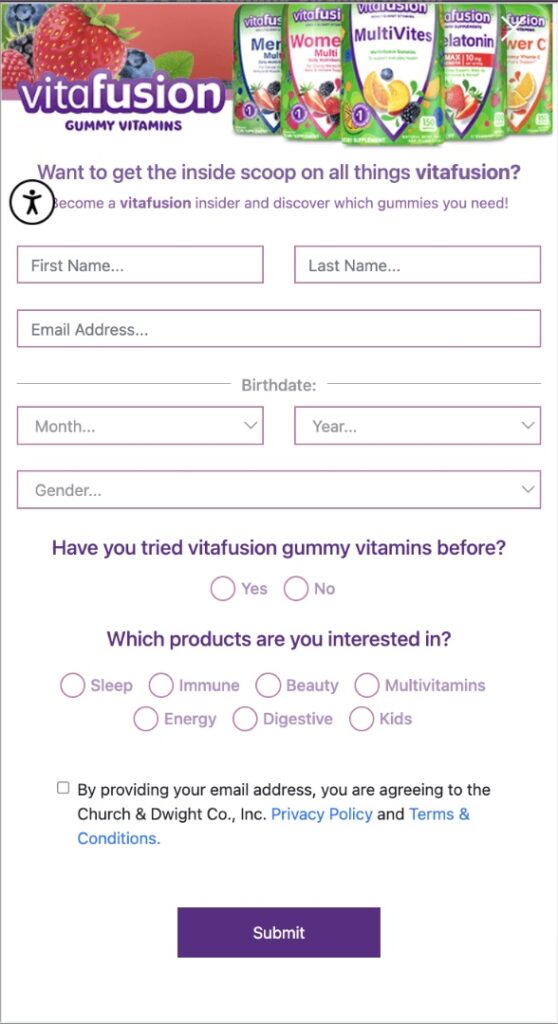
Vitafusion offers a pop-up at site entry to gummyvites.com that asks for quite a bit of information, which can put off many people. However, Vitafusion plainly offers a fun invitation to find out what gummies the visitor needs, along with an opportunity to receive news and updates from Vitafusion. The customer fills out the form and offers their preferences. The company can tailor the product information to the customer’s preferences, increasing sales and trust.
Connect with customers across all channels
Wyng will help your brand develop engaging, customer-centred, brand-defining campaigns that gather that much-needed customer preference information. As customer preferences change over time, consistent check-ins will allow your brand to keep its marketing on point.
CPG brands can use that information to make personalized and relevant offers across all channels, creating a strong bond with your customers that will lead to that holy grail of modern retail: customer loyalty. Contact Wyng today for a full demonstration of zero-party data, its power, and how to leverage that advantage to build your CPG business.
